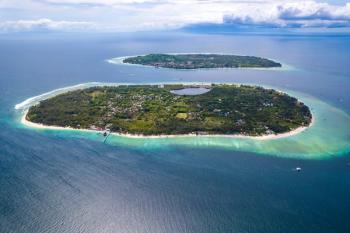
Researchers Study the Relationship Between Aliphatic Ketones and Water Molecules
A group of scientists from the University of Wrocław and the University of Innsbruck studied the relationships between aliphatic ketones and water molecules in various environments.
A group of scientists from the University of Wrocław in Poland and the University of Innsbruck in Austria are studying the relationships between aliphatic ketones and water molecules in various environments. Their work was recently published in Spectrochimica Acta Part A: Molecular and Biomolecular Spectroscopy (1).
Molecules with a carbonyl group attached can be studied through the elucidation of ketone-water interactions. Aliphatic ketones are the simplest compounds with carbonyl groups. Acetone is fully miscible with water, while higher ketones have limited solubility. This has led to extensive studies on acetone-water binary mixtures, though studies of mixtures of water with higher ketones are either rare or nonexistent, the researchers wrote.
In this study, the scientists selected nine aliphatic ketones of different sizes and structures, to examine the effects of different structural motifs on behavior of water in the mixtures. Using a mix of mid-infrared (MIR) and near-infrared (NIR) spectroscopy, the scientists first searched for bands from three nonequivalent OH groups: non-bonded, bonded to OH, and bonded to CO, as well as any new bands in these spectra that may arise due to changes in factors like temperature.
The scientists measure attenuated total reflectance-infrared (ATR-IR), MIR and NIR transmission spectra of dry and water-saturated ketones. Additionally, they determined variations in electric permittivity,
The scientists found that conformational flexibility of aliphatic chains in the linear ketones enables effective shielding of a carbonyl group, which explains poor solubility in water.The water molecules become greatly involved in ketone-water interactions and less so with water-water interactions. Cyclic ketones also have higher solubility of water, allowing for clusters of water to be created when the molecules are in a water-like environment. When wet cyclic ketones rise in temperature, more ketone-water interactions are made; this contrasts with linear ketones and 2,6-dimethylcyclohexanone, where elevated temperatures lead to an increase in the population of singly bonded water at the expense of the doubly bonded one.
Density functional theory (DFT) calculations also reveal that substituting cyclohexanone with a single methyl group does not affect the strength of ketone-water interactions but greatly affects the impact of water solubility in the ketone.
Reference
(1) Czarnecki, M. A.; Beć, K. B.; Grabska, J.; Huck, C. W.; Mazurek, S.; Orzechowski, K. State of water in various environments: Aliphatic ketones. MIR/NIR spectroscopic, dielectric and theoretical studies. Spectrochim. Acta A Mol. Biomol. Spectrosc. 2023, 302, 123057. DOI:
Newsletter
Get essential updates on the latest spectroscopy technologies, regulatory standards, and best practices—subscribe today to Spectroscopy.




